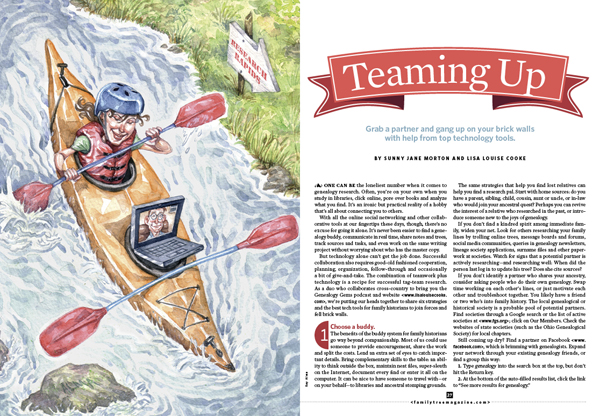by Lisa Cooke | Aug 12, 2015 | 01 What's New, Book Club, Genealogy TV, images, Memory Lane, Military, United States
 An incredible tale of deception during World War II. Inspiring research and storytelling techniques. Learn about the Ghost Army–and the creation of its PBS documentary–in the new, free Genealogy Gems Podcast episode 182.
An incredible tale of deception during World War II. Inspiring research and storytelling techniques. Learn about the Ghost Army–and the creation of its PBS documentary–in the new, free Genealogy Gems Podcast episode 182.
In the summer of 1944, a handpicked group of young GIs landed in France to conduct a secret mission. They were to create an elaborate façade of military might for an audience, the German army. These men had one goal: to fool the enemy into believing they were an American army thousands strong, and draw their attention away from the actual fighting troops.
 In this podcast episode, we celebrate the Twenty-third Headquarters Special Troops–known as the Ghost Army–with my special guest Rick Beyer, author of the book The Ghost Army of World War II: How One Top-Secret Unit Deceived the Enemy with Inflatable Tanks, Sound Effects, and Other Audacious Fakery and director and screenplay author of the acclaimed documentary film Ghost Army, which premiered on PBS.
In this podcast episode, we celebrate the Twenty-third Headquarters Special Troops–known as the Ghost Army–with my special guest Rick Beyer, author of the book The Ghost Army of World War II: How One Top-Secret Unit Deceived the Enemy with Inflatable Tanks, Sound Effects, and Other Audacious Fakery and director and screenplay author of the acclaimed documentary film Ghost Army, which premiered on PBS.
Rick joins us for a riveting conversation. He explains the three divisions of the Ghost Army, and how they fulfilled their duties with courage and creativity. Then he takes us behind the scenes of the book to explore research strategies and in particular, effective interviewing techniques. Finally he talks to us about putting it all together: storytelling, the integration of all the art, photos and documents, and fantastic catchy chapter titles that make you want to read.
This is a must-hear episode whether you love history, mystery, military stories, family history writing advice or just listening in on a great conversation! Thank you for sharing this episode with others who will enjoy it!
 If you love author interviews, check out the Genealogy Gems Book Club. We regularly interview writers of best-selling fiction and nonfiction titles that catch the interest of family history lovers.
If you love author interviews, check out the Genealogy Gems Book Club. We regularly interview writers of best-selling fiction and nonfiction titles that catch the interest of family history lovers.
by Lisa Cooke | Nov 28, 2013 | 01 What's New, Collaborate, Inspiration, Publishing
 One of the most important things we do as genealogists is share! We share research findings, family stories, trees, heirloom photos and more. These days, sharing online is often the way to go. It’s fast, it’s relatively organized, it gets things into the hands of those who want them and (often) it’s free!
One of the most important things we do as genealogists is share! We share research findings, family stories, trees, heirloom photos and more. These days, sharing online is often the way to go. It’s fast, it’s relatively organized, it gets things into the hands of those who want them and (often) it’s free!
To wrap this series of blog posts on collaborating, I offer 4 ways to share genealogy online (in addition to Dropbox and Evernote, which we discussed in previous posts).
1. Attach scanned documents, photos and stories to your online tree. Whether you keep a tree at MyHeritage, Ancestry, FamilySearch or another site, beef it up with everything you have. That only enriches the body of knowledge out there and gives others a leg up on the next bit of research. You can also include links to applicable notes in Evernote.
2. Post gravestone photos and other burial information at online cemetery sites. BillionGraves and Find A Grave are the two big ones, of course. These sites provide searchability and a platform for collaboration between descendants.
3. Post meaty queries that show what you know and what your questions are. RootsWeb and USGenWeb are two enormous sites, organized by location and topic, where you can post questions about people, places and more. Check out this page on how to write a good query and this Cyndi’s List portal to various message boards. TIP: Remember to include all important related keywords, name and location spellings, and dates in your messages so they are easily found by your long lost cousins using Google!
4. Publish your research. Genealogy newsletters, magazines and journals of all levels (from the local to the national and beyond) want your well-researched, well-written research. What’s a chunk of research you could share? Look for publications that are indexed in PERSI, the Periodical Source Index, because other genealogists are most likely to find your work when it’s indexed there. Of course, family history websites, blogs and books are all great ways to publish your research, too. Just get it out there!
As the online genealogy community continues to grow, our opportunities to grow bigger, better family trees also grow. So my question to you is: What do you have to share? And have you begun?

Check out the magazine article that inspired this series of posts on collaborating. It’s “Teaming Up,” and it appears in the December 2013 issue of Family Tree Magazine. Sharing genealogy files is just one topic we cover. The article itself was a cross-country collaboration between myself and Genealogy Gems Contributing Editor Sunny Morton. To write it, we relied on a lot of the same tips and tools we recommend!
Finally, check out my previous blog posts in this mini-series on collaboration:
Tips for Collaborative Genealogy: Research with a Partner
Tips for Collaborative Genealogy: Dropbox for Genealogists
Tips for Collaborative Genealogy: Evernote for Genealogists
by Lisa Cooke | May 23, 2013 | 01 What's New, Inspiration, Publishing, Research Skills
 Do you need a little extra motivation to write your family history? Here it is! The International Society of Family History Writers and Editors (ISFHWE) sponsors an annual writing contest for those who write genealogy for blogs, journals, magazines, newspapers, websites and even for editors of family history newsletters. Winners in each category receive a cash prize and a certificate–and of course, bragging right!
Do you need a little extra motivation to write your family history? Here it is! The International Society of Family History Writers and Editors (ISFHWE) sponsors an annual writing contest for those who write genealogy for blogs, journals, magazines, newspapers, websites and even for editors of family history newsletters. Winners in each category receive a cash prize and a certificate–and of course, bragging right!
The Excellence-in-Writing Competition accepts columns, articles and society or family history newsletters. You can submit unpublished materials and those that were published in 2012. Click here for complete rules and entry information and here for an online entry form. Entries are due by June 15, so polish that piece or pull out that thing you shared with everyone at the holidays or family reunion last year.
 An incredible tale of deception during World War II. Inspiring research and storytelling techniques. Learn about the Ghost Army–and the creation of its PBS documentary–in the new, free Genealogy Gems Podcast episode 182.
An incredible tale of deception during World War II. Inspiring research and storytelling techniques. Learn about the Ghost Army–and the creation of its PBS documentary–in the new, free Genealogy Gems Podcast episode 182. In this podcast episode, we celebrate the Twenty-third Headquarters Special Troops–known as the Ghost Army–with my special guest Rick Beyer, author of the book The Ghost Army of World War II: How One Top-Secret Unit Deceived the Enemy with Inflatable Tanks, Sound Effects, and Other Audacious Fakery and director and screenplay author of the acclaimed documentary film Ghost Army, which premiered on PBS.
In this podcast episode, we celebrate the Twenty-third Headquarters Special Troops–known as the Ghost Army–with my special guest Rick Beyer, author of the book The Ghost Army of World War II: How One Top-Secret Unit Deceived the Enemy with Inflatable Tanks, Sound Effects, and Other Audacious Fakery and director and screenplay author of the acclaimed documentary film Ghost Army, which premiered on PBS. If you love author interviews, check out the Genealogy Gems Book Club. We regularly interview writers of best-selling fiction and nonfiction titles that catch the interest of family history lovers.
If you love author interviews, check out the Genealogy Gems Book Club. We regularly interview writers of best-selling fiction and nonfiction titles that catch the interest of family history lovers.






